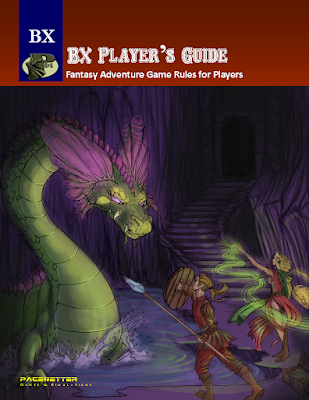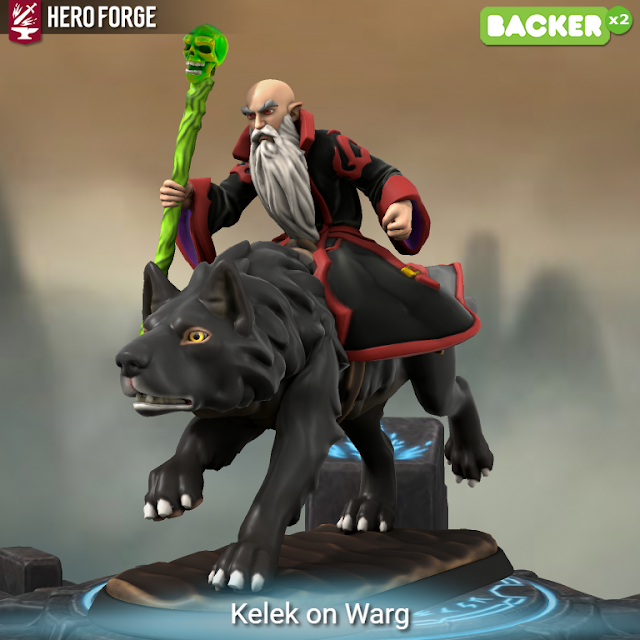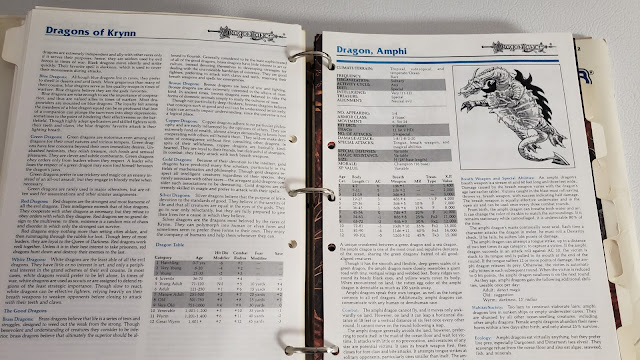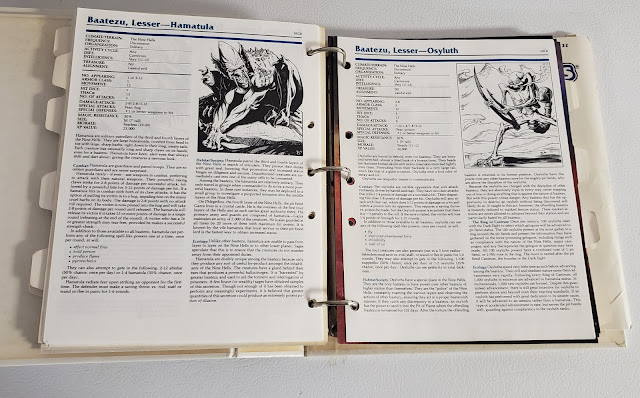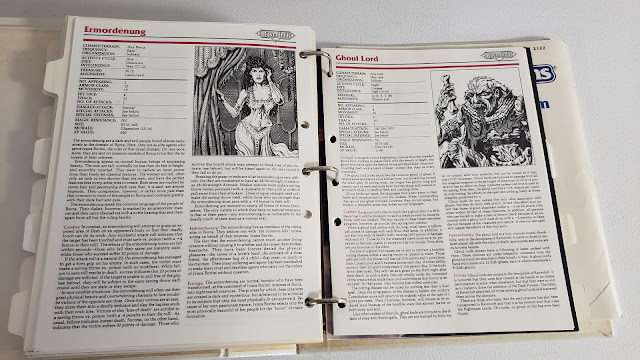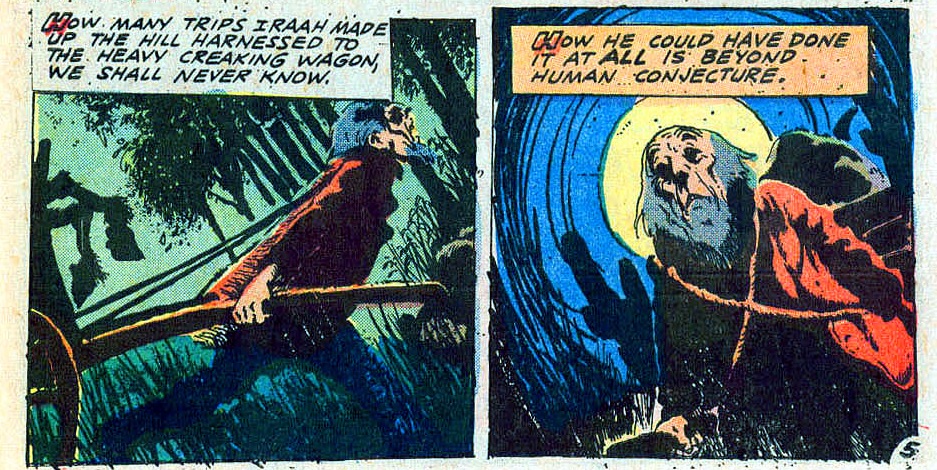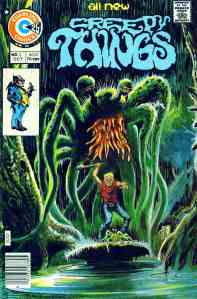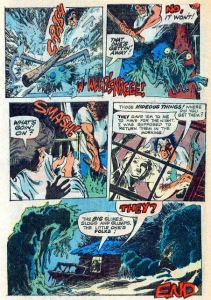[Fanzine Focus XXIII] Crawl! No. 7: Tips! Tricks! Traps!
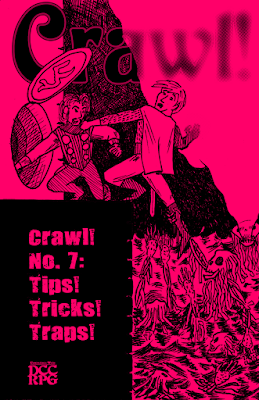 On the tail of the Old School Renaissance has come another movement—the rise of the fanzine. Although the fanzine—a nonprofessional and nonofficial publication produced by fans of a particular cultural phenomenon, got its start in Science Fiction fandom, in the gaming hobby it first started with Chess and Diplomacy fanzines before finding fertile ground in the roleplaying hobby in the 1970s. Here these amateurish publications allowed the hobby a public space for two things. First, they were somewhere that the hobby could voice opinions and ideas that lay outside those of a game’s publisher. Second, in the Golden Age of roleplaying when the Dungeon Masters were expected to create their own settings and adventures, they also provided a rough and ready source of support for the game of your choice. Many also served as vehicles for the fanzine editor’s house campaign and thus they showed another DM and group played said game. This would often change over time if a fanzine accepted submissions. Initially, fanzines were primarily dedicated to the big three RPGs of the 1970s—Dungeons & Dragons, RuneQuest, and Traveller—but fanzines have appeared dedicated to other RPGs since, some of which helped keep a game popular in the face of no official support.Since 2008 with the publication of Fight On #1, the Old School Renaissance has had its own fanzines. The advantage of the Old School Renaissance is that the various Retroclones draw from the same source and thus one Dungeons & Dragons-style RPG is compatible with another. This means that the contents of one fanzine will compatible with the Retroclone that you already run and play even if not specifically written for it. Labyrinth Lord and Lamentations of the Flame Princess Weird Fantasy Roleplay have proved to be popular choices to base fanzines around, as has Swords & Wizardry. Another choice is the Dungeon Crawl Classics Role Playing Game.
On the tail of the Old School Renaissance has come another movement—the rise of the fanzine. Although the fanzine—a nonprofessional and nonofficial publication produced by fans of a particular cultural phenomenon, got its start in Science Fiction fandom, in the gaming hobby it first started with Chess and Diplomacy fanzines before finding fertile ground in the roleplaying hobby in the 1970s. Here these amateurish publications allowed the hobby a public space for two things. First, they were somewhere that the hobby could voice opinions and ideas that lay outside those of a game’s publisher. Second, in the Golden Age of roleplaying when the Dungeon Masters were expected to create their own settings and adventures, they also provided a rough and ready source of support for the game of your choice. Many also served as vehicles for the fanzine editor’s house campaign and thus they showed another DM and group played said game. This would often change over time if a fanzine accepted submissions. Initially, fanzines were primarily dedicated to the big three RPGs of the 1970s—Dungeons & Dragons, RuneQuest, and Traveller—but fanzines have appeared dedicated to other RPGs since, some of which helped keep a game popular in the face of no official support.Since 2008 with the publication of Fight On #1, the Old School Renaissance has had its own fanzines. The advantage of the Old School Renaissance is that the various Retroclones draw from the same source and thus one Dungeons & Dragons-style RPG is compatible with another. This means that the contents of one fanzine will compatible with the Retroclone that you already run and play even if not specifically written for it. Labyrinth Lord and Lamentations of the Flame Princess Weird Fantasy Roleplay have proved to be popular choices to base fanzines around, as has Swords & Wizardry. Another choice is the Dungeon Crawl Classics Role Playing Game.Published by Straycouches Press, Crawl! is one such fanzine dedicated to the Dungeon Crawl Classics Role Playing Game. Since Crawl! No. 1 was published in March, 2012 has not only provided ongoing support for the roleplaying game, but also been kept in print by Goodman Games. Now because of online printing sources like Lulu.com, it is no longer as difficult to keep fanzines from going out of print, so it is not that much of a surprise that issues of Crawl! remain in print. It is though, pleasing to see a publisher like Goodman Games support fan efforts like this fanzine by keeping them in print and selling them directly.
Where Crawl! No. 1 was something of a mixed bag, Crawl! #2 was a surprisingly focused, exploring the role of loot in the Dungeon Crawl Classics Role Playing Game and describing various pieces of treasure and items of equipment that the Player Characters might find and use. Similarly, Crawl! #3 was just as focused, but the subject of its focus was magic rather than treasure. Unfortunately, the fact that a later printing of Crawl! No. 1 reprinted content from Crawl! #3 somewhat undermined the content and usefulness of Crawl! #3. Fortunately, Crawl! Issue Number Four was devoted to Yves Larochelle’s ‘The Tainted Forest Thorum’, a scenario for the Dungeon Crawl Classics Role Playing Game for characters of Fifth Level. Crawl! Issue V continued the run of themed issues, focusing on monsters, but ultimately to not always impressive effect, whilst Crawl! No. 6: Classic Class Collection presented some interesting versions of classic Dungeons & Dragons-style Classes for Dungeon Crawl Classics, though not enough of them.
As the title suggests, Crawl! Issue No. 7: Tips! Tricks! Traps! is a bit of bit of a medley issue, addressing a number of different aspects of dungeoneering and fantasy roleplaying. The issue opens with ‘Lost in Endless Corridors’ by Kirin Robinson. It contrasts the attraction and joy of the maze with the challenge of not making the play of mazes in fantasy roleplaying games, well, boring. What it highlights is the potential frustration of playing through a maze and the loss of player agency. It suggests two solutions to avoid this. The first is to set time limits on resources and character statuses during their exploration of the maze, such as their torches running out or their beginning to feel light-headed after a time. The second is move the exploration of the maze from being procedurally-based to clue-based, and so make the maze more interesting rather than an endless series of empty of corridors. This would need more work for the Judge than simply drawing out a map, but the potential pay-off would be greater and make the maze more memorable than frustrating.
Thom Hall’s ‘Roguelike Fountains’ is inspired by Roguelike computer adventure games, in particular, the fountains with their messages and effects to be found in such games. It comes with a number of tables for determining the nature of any fountain found and what its accompanying message might be. Thus magical or non-magical, and various effects and messages, with even the non-magical fountains often having some kind of effect. The use of the ‘Square’ font for tables, as used in the computer game adds to the nostalgic feel of the piece.
Sean Ellis continues his irregular Monster Column with ‘Consider the Ogre’. It points out the discrepancy between the Troll and the Ogre in Dungeons & Dragons, that the Dungeons & Dragons Troll with its rubbery skin and regenerative health is not the traditional Troll of myth and legend. That role actually falls to the Ogre. Although it does not suggest replacing one with the other, it does offer ways of making the Ogre more interesting than simply as a coarse, chaotic baby-snatching species of humanoids. It suggest the possibility that some might even be repentant and there might be multiple types of Ogre. This possibility is supported by tables for rolling an Ogre’s appearance and how different it is, and a power and a weakness, and then connecting the three together to create a cohesive design. Overall, it is a quick and dirty way of creating more individualistic Ogres.
‘Critical Table T: Traps – Traps and Crits’ by Jeffrey Tadlock details six traps ready to be placed in a Judge’s dungeon. These are simple enough—the spiked pit trap, the poison needle lock, the scythe hall, falling block, and repeating poison arrow trap—and arguably, classics of the fantasy gaming genre. Rather than have the Player Character affected by a trap make a saving throw against the effects of the trap when triggered, the Judge makes an attack roll against the Player Character for the trap. This means that traps, just as other forms of attack in the Dungeon Crawl Classics Role Playing Game, need to have a table for determining what happens when a critical result is rolled on the attack. This is rolled on Critical Table T: Traps, a table of thirty results, the die rolled for any one trap determined by the attack modifier for the trap. So on a roll of one on any die, the trap springs perfectly and inflicts extra damage, but an attack modifier of +10 or +11 and the Judge is rolling a fourteen-sided die on Critical Table T: Traps, which might give the result of eleven, the damage inflicted strikes the target’s spinal area or if poison, overwhelms her central nervous system. Either way, the player needs to make a Fortitude Saving Throw for his character to remain conscious and the character also suffers two five-sided dice’s worth of extra damage. This makes traps even deadlier and makes the Thief Class far more important in disarming traps.
The ‘Shadowsword of Ith-Narmant’ is a write-up of a demonic shadow sword by Jürgen Mayer. It was forged from the demon’s own shadow by bound shadow warlocks and artificers, and like many of their creations may be found scattered across many worlds. It is treated as a longsword, but two six-sided dice are rolled for damage and when doubles are rolled, there is an extra effect, such as on double threes, ‘Taintburst’ inflicts three extra damage on the wielder and target, this damage, if it kills wielder or target, the demonic energies in the sword fuses with them, making them rise as a demon minion of Ith-Narmant. There are six such effects, one each for the six sets of doubles, but the very first, rolls of double ones, ‘Lifesucker’, sucks permanent Hit Points from the wielder and when enough is sucked out, the ‘Shadowsword of Ith-Narmant’ gains a Level. Each Level increases the viciousness and intelligence of the blade and inflict demonsigns on the wielder, which will have deleterious effects on the wielder’s alignment, ultimately turning him into a Champion of Ith-Narmant. The sword, ‘Shadowsword of Ith-Narmant’ is by any other name, Stormbringer from the novel by Michael Moorcock—or at least is inspired by it. Even if it is a bit too obvious, the mechanics are well done and bringing the sword into a campaign should give it an epic feel.
Rounding out the issue is ‘My Gongfarmer Can’t Do Sh*t!’ by Paul Wolfe. It is a call for the Zero Level characters of Character Funnel in Dungeon Crawl Classics to have skills and to be able to do things that reflect their backgrounds and occupations rolled during character creation. Not through an extensive list of skills, but rather through player creativity and narration when his Zero Level Player Character needs to do something which does not involve fighting, running, or screaming (or dying). It will require a little extra adjudication upon the part of the Judge, but the method will add to the background of any Zero Level character who survives a Character Funnel.
Physically, Crawl! Issue No. 7: Tips! Tricks! Traps! is decently put together. The few pieces of art vary in quality, some of it being a little cartoonish. The contents though, vary in quality and usefulness. This is not to say that none of the contents of the issue are useless, but none really quite stand out as being so useful that the Judge has to have access to them. The advice in ‘Lost in Endless Corridors’ and ‘My Gongfarmer Can’t Do Sh*t!’ feels a little obvious, unless of course, the Judge is new to Dungeon Crawl Classics, and whilst ‘Critical Table T: Traps – Traps and Crits’ and ‘Shadowsword of Ith-Narmant’ both add to the game, neither feels vital to a Judge’s game. Crawl! Issue No. 7: Tips! Tricks! Traps! feels like a mixed bag, containing good content, but just not good enough to be a must have.





